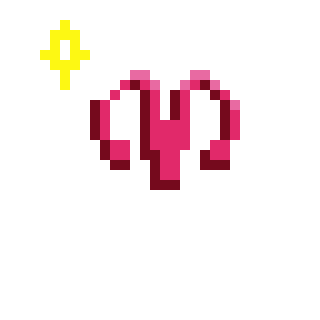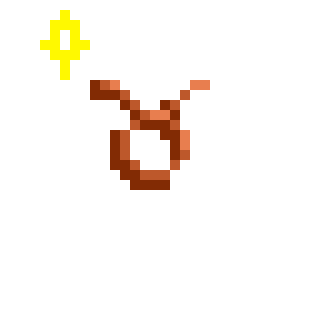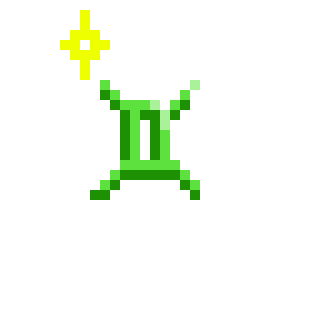This is a guest post from the blog brainfarts, which features pop culture, feminism and cats.
Spoiler warning: Braindead, Carrie, The Fifth Child, Frankenstein, Grace, The Innocents, The Orphanage, Prometheus, Psycho, Rosemary’s Baby, Splice, We Need To Talk About Kevin
Content warning: childbirth, rape, incest, gore
Introduction
I’ve always found pregnancy scary—in fact, “unintended pregnancy” is my most frequent nightmare theme. Therefore, it is not surprising that I find horror films featuring pregnancy, motherhood, and evil babies especially terrifying. Naturally, my fascination is more often shared by women than men; I remember wincing alone all the way through the Prometheus Caesarian scene the way my male friends squirmed through Teeth.
From 70s classics like The Exorcist, Alien, and Carrie to recent films such as We Need To Talk About Kevin, The Orphanage, and Grace, motherhood runs like a rich vein through the horror canon. Many of these films are written or directed by women (which is uncommon, especially in horror) and many of them have been controversial and divisive. As I explore this fascinating and unnerving sub-genre, I will be asking from a feminist perspective why motherhood provides such a fertile ground for horror fiction, and why it resonates so powerfully with (in particular female) audiences. Every monster has a mother, but is there a monster in every mother?
Mother or host, foetus or parasite?
In a parent-child relationship, we usually assume the parent to be powerful and the child vulnerable—a power dynamic that can be inverted in pregnancy. Pregnancy (especially when abortion is not available) carries a fundamental degree of helplessness, for you must submit wholly to an unknown and uncontrollable being that lives not only inside you, but also lives off you. In The Fifth Child, Doris Lessing’s short novel about a happy family destroyed by the arrival of the strange fifth child Ben, the mother Harriet is tortured by the foetus from the beginning of the pregnancy: “Sometimes she believed hooves were cutting her tender inside flesh, sometimes claws.” Before long she begins to think of Ben as “the enemy,” and thus begins their lifelong adversarial relationship.
When the foetus is malignant, a relationship that should be nurturing can easily turn parasitic. In Rosemary’s Baby, Rosemary suffers severe abdominal pains throughout her early pregnancy, only for the pains to abruptly stop just as she is about to visit a doctor to get help. Her demonic foetus holds all the power—it deliberately pushes her to her limit, but stops for self-preservation. Much of pregnancy horror relies on the fact that the host is vulnerable: She cannot harm the foetus without harming herself. Think of the tense Caesarian scene in Prometheus (spiritual sequel to the famous “chestburster” scene in Alien).
![prometheus-abortion]()
![chestburster]()
The uncomfortable passivity of pregnancy is also described in Lionel Shriver’s novel We Need To Talk About Kevin. While carrying her troublesome, and eventually murderous child Kevin, the narrator Eva feels that “I had demoted myself from driver to vehicle, from householder to house.” This helplessness extends well beyond childbirth, as motherhood requires absolute commitment to a human of unknown temperament, who, when it is placed in our arms, has no concept of morality. Eva muses how doctors can test foetuses for Down’s syndrome, but “not test for malice, for spiteful indifference, or for congenital meanness. If they could, I wonder how many fish we might throw back.” Thus the evil child trope plays on our very real fear of not knowing what kind of being we are bringing into the world.
Blood and milk
Pregnancy, childbirth, and motherhood are undeniably messy and sometimes even gory, so they are ripe sources of horror. Body fluids play an essential part in the mother-child relationship, from the nutrients shared through the umbilical cord, to the blood shed during childbirth, to the breast milk fed to the infant, to the urine and excrement cleaned up by the mother. These exchanges should signify caring, but in the perverted mother-child relationship, they are tools of warfare, where the body is the battleground.
![ouch.]()
ouch.
In Grace, Madeline gives birth to a baby that attracts flies, smells strange, and rejects breast milk, instead biting her mother’s breasts to drink her blood. The all-encompassing sacrifice of motherhood is played out as the baby’s demands eventually lead Madeline to murder in order to feed her baby. The symbolic use of blood and milk is used to draw Madeline and her baby as opposites, and to illustrate the transfer of power from mother to child. Madeline the mother is vegan and drinks soy milk; Grace the baby is a cannibal. Madeline becomes anaemic; Grace is strengthened by blood. Madeline is filled with milk the baby will not drink; Grace is filled with her mother’s stolen blood.
Blood is also an important motif in Carrie, as the mother and daughter fight over menstrual blood, pig’s blood, and finally each other’s blood when they kill each other.
![blood1]()
![blood2]()
![blood3]()
Lynne Ramsey’s excellent 2011 film We Need To Talk About Kevin repeatedly shows Kevin playing menacingly with his food, drawing visual parallels between jam and blood, lychees and eyeballs, eggshells and fingernails. This not only foreshadows the violence that Kevin will commit, but also transforms the sustenance supplied by his mother into a weapon. From the beginning, body fluids play a vital strategic role in Kevin’s battle with his mother. He deliberately refuses to potty train in order to force his mother to continue to clean up his excrement; it is this act of malice that finally causes Eva to throw her son, breaking his arm. This act of violence is the first successful communication between Eva and the silent sullen Kevin, who begins to use the toilet immediately after the incident.
![lychee2]()
Kevin eats a lychee.
When the maternal contract is broken and nurturing turns to warfare, the mother and the child resort to their most primitive resource—their bodies—in the fight.
![blood-bottle]()
I can’t see this ending badly!
Woman’s burden alone
In Prometheus, when Dr. Elizabeth Shaw realises that she has been sneakily impregnated by an alien, she rushes to the ship’s automated surgery machine and demands a Caesarian, only to find that the machine caters to male patients only.
![male-only]()
Fuck you medpod!
This sly joke perfectly demonstrates the isolating nature of pregnancy in a world run by men that manipulates and dismisses, rather than helps, pregnant women.
Isolation is key to motherhood horror, as the other characters in the story (husbands and fathers in particular) are often absent. In The Orphanage, Laura’s husband abandons her when he can no longer deal with her superstitious beliefs regarding their son’s disappearance and the ghosts of orphans past. Only in his absence does she successfully communicate with the ghosts and find her son. In The Innocents, a lonely governess becomes convinced that the two creepy children in her care are possessed by malevolent ghosts. With no one but the children and an elderly housekeeper to temper her suspicions, her increasing paranoia ends in tragedy.
Even when the mother is not physically alone, she is psychologically isolated as she carries the burden of childrearing, which others often won’t acknowledge is a burden at all. In The Fifth Child, Harriet searches in vain for anyone—her husband, her family, a doctor—to recognise the monstrosity of Ben and the misery of her predicament: “What she wanted, she decided, was that at last someone would use the right words, share the burden.” Instead, she constantly has what she calls “the other conversation” with adults who skirt around the issue, insisting that Ben is normal and that Harriet should try harder.
In many cultures, a mother’s love is seen as a sacred, unquestionable certainty—in fact, the idea of not loving your child is deeply taboo. In difficult mother-child relationships, this taboo provides a further isolating effect, as mothers cannot speak what they feel without risk of censure. In We Need To Talk About Kevin, Eva finds herself unmoved by Kevin’s birth, and forces herself to feign joy. When she tries to communicate her unhappiness to her husband, he shuts down the conversation, saying “Never, ever tell me that you regret our own kid.” Having so far enjoyed a marriage of openness and honesty, Eva is left feeling disconnected from her husband for the first time: “Since when was there anything that one of us was never, ever to say?”
The terror of having to raise an untameable child lies primarily in the unsolvable moral dilemma of the situation. Should the mother, convinced that all children are born good, continue to care for the child in the hope that love cures all? Or should she commit the ultimate crime of motherhood: to abandon or even kill her child? Doris Lessing sums up the dilemma at the heart of The Fifth Child:
We don’t like things that are complicated, that perhaps there isn’t a solution to. And there’s no solution to the problem of this book; there’s no right way to behave. Maybe people get upset by that. I don’t think we like dilemmas. We like to think we can solve everything, but we can’t always. – Doris Lessing
In motherhood horror, other people, especially men, turn away from the dilemma and refuse to see it, and yet still blame the mother for whichever path she chooses. In The Fifth Child, Harriet’s husband David at first dismisses her concerns about Ben’s behaviour, but once Ben’s violence can no longer be ignored, David insists that Ben must be sent away to a cold and cruel institution. When Harriet, unable to leave her child suffering, rescues Ben from the institution, David condemns Harriet for ruining the family. Caught in the double-bind between wifely loyalty and motherly duty, Harriet cannot win whatever she chooses; she is branded as “irresponsible” precisely for taking responsibility for her son.
As these women suffer alone with the impossible task of raising a monster, society treats them as criminals rather than victims.
This pattern is visible in real life too. In December 2012, 20-year-old Adam Lanza shot and killed his mother, then travelled to Sandy Hook Elementary School and killed twenty children and six teachers.
Depending on whom you ask, there were twenty-six, twenty-seven, or twenty-eight victims in Newtown. It’s twenty-six if you count only those who were murdered at Sandy Hook Elementary School; twenty-seven if you include Nancy Lanza; twenty-eight if you judge Adam’s suicide a loss. There are twenty-six stars on the local firehouse roof. On the anniversary of the shootings, President Obama referred to “six dedicated school workers and twenty beautiful children” who had been killed, and the governor of Connecticut asked churches to ring their bells twenty-six times. Some churches in Newtown had previously commemorated the victims by ringing twenty-eight times, but a popular narrative had taken hold in which Nancy—a gun enthusiast who had taught Adam to shoot—was an accessory to the crime, rather than its victim. – Andrew Solomon, The New Yorker
Lanza’s mother, who lived with and cared for her difficult and troubled son, received much more criticism in the press than did Lanza’s father, who had not seen his son for two years at the time of the killings. This pattern of judgment is mirrored in We Need To Talk About Kevin, in which Eva is utterly ostracised by society following Kevin’s school massacre, even though she has lost her husband and daughter. As it is considered the mother’s job to socialise the child, we assume that any savagery exhibited by the child must be the fault of the mother; it is taboo to wonder whether the child could be incurably vicious. Eva is treated as a criminal, but her only crime was not being a “natural” mother. Does her punishment fit the crime?
“Family values”
As explored above, in these stories the mother often finds herself chastised rather than helped by the people around her, a dynamic that occurs again and again under the euphemism of “family values.” She is repeatedly told what to do for the good of the baby, for the good of the family, and supposedly for the good of herself, all against her own better judgement. In Rosemary’s Baby, Rosemary’s husband makes a secret pact with the wealthy Satanists-next-door (the Castevets), agreeing to let the Devil rape and impregnate Rosemary in return for his career advancement. (What a catch!)
![pixiecut]()
Never trust a man who doesn’t like your pixiecut.
The meddling Castevets strongarm Rosemary into drinking a strange herbal drink and visiting their Satanist doctor of choice, much to Rosemary’s physical detriment as she suffers an extremely painful pregnancy.
![friends]()
Even without the Satanic overtones, this is a familiar real-life scenario, as pregnant women around the world commonly face abuse, manipulation, and a denial of their most basic rights, both from authorities and those closest to them. Every year, 15 million girls under the age of 18 are forced (usually by their own families) to marry, often to much older men, leading to rape, forced pregnancy, and poor health because they are physically too young for pregnancy. 2.6 billion women worldwide live in countries where marital rape is not a criminal offence. More than 25% of the world’s people live in countries where abortion is generally prohibited, and many more have no access to abortion due to cultural or religious reasons. It is well-known that pro-life advocates often use the phrase “family values” in their arguments (for example former Governor of Texas Rick Perry), but incredibly, the phrase “family values” was used by the Indian government in 2012 as a reason not to criminalise marital rape, and by the Yemeni government in 2009 as a reason not to introduce a minimum marriage age.
The real-world exploitation and trade of women, their bodies, and their babies is mirrored in motherhood horror fiction. Just as Rosemary’s husband sells his wife’s body for material gain, David the android covertly impregnates Shaw in order to find out the origin of humanity in Prometheus. In The Omen, a priest convinces a father to replace his stillborn baby with a mysterious orphan Damien, without informing his wife. (Spoiler: it doesn’t end well). In Splice, a scientist is raped and impregnated by her own experiment, and is bribed by her employers to keep the baby so that they may profit scientifically. It doesn’t matter whether it is husbands, doctors, priests, scientists, or cult leaders doing the manipulation: all are patriarchal institutions run by men that fail to help the woman in the story.
Among this onslaught of male hostility is an unusual villain in the form of the scheming older woman, such as Madeline’s controlling mother-in-law in Grace, or Mrs. Castevet in Rosemary’s Baby. These characters both manipulate a vulnerable younger woman in order to steal her baby. Mrs. Castevet’s garish clothes and heavy make-up contrast with Rosemary’s fresh-faced look and childish style, emphasising the fertility, innocence, and youth of one, and the “barren” corruption of the other. The old crone archetype is able to wield power in the patriarchy precisely because she is no longer fertile; in this context, by losing her fertility she loses the capacity to be exploited.
![rosemary-and-mrs-castevet]()
Rosemary and Mrs. Castevet
Even when reproductive rights are not at stake, women in motherhood horror find themselves ensnared by “family values” in more subtle ways: In We Need To Talk About Kevin, Eva’s husband insists they must move to the suburbs to fulfill his cosy fantasy of American childhood and in particular, wholesome father-son bonding: “He needs a yard… where we can toss a baseball, fill a pool.” Eva would much rather stay in the city, but she is flatly told by her husband that the family must move for his benefit, and for Kevin’s: “There are two of us, and one of you.” Just as in real life, “family values” conveniently benefit everyone except women.
Sex, sex, sex
It’s normal for parents to find it difficult to adjust to their child’s sexual development. It becomes a lot harder when your child is a demon. Sexuality adds a whole new layer of threat in the relationship between the mother and the monster-child, who often uses age-inappropriate sexuality as a shock tactic. Take for example Linda Blair’s foul-mouthed turn as the possessed child Regan in The Exorcist, or the precociously flirtatious, and maybe-possessed child Miles in The Innocents:
![cocks]()
![innocents-kiss-1]()
In We Need To Talk About Kevin, Kevin uses sex as a form of domestic terrorism against his mother. Just look at this absolutely terrifying clip, in which an ordinary awkward mother-son moment (walking in on the son masturbating) is transformed into an intensely disturbing encounter through the use of eye contact. (The gif makes it look like she comes back for more, but that’s not what happens.)
![threateningfap]()
The mother’s fear of sexual violence from her offspring is not without basis; in many cases she has already suffered sexual violence—which the demon child implicitly threatens to repeat. Several of the baby-monsters in motherhood horror are conceived by rape: The devil rapes Rosemary to produce Rosemary’s baby, Margaret’s husband rapes her to produce Carrie, and in Prometheus Shaw’s alien offspring rapes the Engineer to produce the original alien in the Alien franchise.
Adding to the terror of the monster’s sexuality is the fear that it may breed and produce more monsters, creating a never-ending cycle of sexual violence. Doctor Frankenstein refuses to fulfil the Creature’s demand for a wife, for fear that they will reproduce. This decision leads to a much worse outcome: The Creature kills (and in some versions, rapes) Frankenstein’s fiancée Elizabeth. In Splice, the experimental human-animal hybrid Dren transforms from a relatively gentle female to a violent male that rapes and impregnates its creator, resulting in a new hybrid. The Alien franchise is full of violent reproduction, as the primary breeding method of the titular alien is forced impregnation that destroys the host.
![dren-male]()
Dren takes on a male form.
![prometheus-birth]()
The alien emerges from the Engineer.
The cyclic nature of abuse can be more complex. It is a well-known tragedy that abused children are more likely to become abusive parents. In Carrie, the religious fanatic Margaret shames her daughter Carrie for her first period, believing all female sexuality is sinful. Margaret’s misogynistic abuse of Carrie is a direct result of the patriarchal abuse she herself received, both from extremist Christians and from her own husband.
![curse-of-blood-larger]()
Margaret shames Carrie for her first period.
It goes without saying that the terror of sexual violence tends to strike female viewers more strongly, but the victims in motherhood horror fiction are not always female—for example, several men (including the male-looking Engineer) fall victim to the alien’s reproductive game in the Alien franchise. In fact, the motherhood horror genre can easily be expanded to the broader genre of what-have-I-created-horror, which includes stories with male creators such as Frankenstein and Little Shop Of Horrors (a dark comedy-musical about a man who eventually turns to murder to satisfy his carnivorous pet plant and achieve fame. Spoiler: it doesn’t end well). What is notable is that male creators such as Doctor Frankenstein tend to be driven by their egos, whereas female creators are more often driven by the love-hate relationship with their offspring.
![a-few-drops]()
They start off cute…
![feed-me]()
…but it quickly gets out of hand.
Interestingly, while same-sex pairs (mothers and daughters, fathers and sons) are more often nemeses, different-sex pairs (mothers and sons, fathers and daughters) are more often of the icky semi-incestuous, or tragic attachment-gone-too-far type. In particular, the unhealthy relationship between an emotionally stunted manchild and his domineering elderly mother is a frequent source of both horror and comedy. This is best shown in one of my all-time favourite films: Braindead, Peter Jackson’s 1992 zombie comedy about a young man so devoted to his controlling mother that he tries to look after her even after she becomes a zombie. (The film also holds the record for most fake blood used in one production!) In a disgusting and hilarious finale, Lionel’s mother turns into a giant naked female grotesque (complete with string of pearls) that literally swallows him back into her womb. Lionel defies his mother for the first time in his life, bursting out of her abdomen, to be symbolically and very literally reborn.
![love-you-like-your-mother]()
All the effects in Braindead are non-CGI. This actually happened!
As if the incestuous overtones were not enough, many of these stories (such as Frankenstein, Splice and We Need To Talk About Kevin) also involve Oedipal-type plots in which the child-monster kills the spouse of its creator. By effectively replacing the spouse, the monster becomes ever-more miserably entwined with the creator.
Mummy monster?
To all the mothers of demon children who are reading this: I get it. It’s hard to raise little Devil Junior. But have you considered that perhaps you are the monster?
![moi-cat]()
There’s a lot of ambiguity in motherhood horror. The question of whether the child is abnormal or the woman is crazy hangs over many of these stories. In The Orphanage and The Innocents, the ambiguity is supernatural—we are unsure whether the ghosts are in the woman’s imagination. In We Need To Talk About Kevin, the ambiguity is psychological—we are unsure whether Kevin’s behaviour is ordinary childish naughtiness or true malignance (until it is far too late).
It’s interesting to note how this ambiguity is interpreted by different viewers. I came away from We Need To Talk About Kevin believing Kevin was innately evil; shortly after, I was incredulous to hear a male critic say that Kevin’s sociopathy was primarily due to his mother’s coldness. The debate draws on weighty and unresolvable questions such as nature vs nurture, original sin, and whether all children are born innocent.
Whether it’s purely monstrous mothers such as Vera in Braindead and Margaret in Carrie, or essentially good women who end up doing terrible things such as Madeline in Grace and Harriet in The Fifth Child, there is a suggestion throughout the genre that motherhood turns even ordinary women into monsters. The causes of this monstrosity are varied. Some, such as Madeline in Grace, commit their crimes in a desperate attempt to provide for their offspring. Others, such as Eva in We Need To Talk About Kevin and Harriet in The Fifth Child, are pushed by the oppressive demands of motherhood until they lash out. Others, such as Miss Giddens in The Innocents and Laura in The Orphanage, are driven mad by the mental stultification of spending too much time alone with children. Others have an unhealthily possessive and controlling relationship with their children, such as Mrs. Bates in Psycho and Vera in Braindead. Some mothers seem to be trying to live vicariously through their children, such as Mother Gothel in Tangled and Erica in Black Swan. Notably, all these monster-mothers have their roots in the everyday, commonplace difficulties of motherhood.
The dual monstrosity of both mother and child is reciprocal: through the maternal bond, the monstrosity of one rubs off on the other. For example, Mrs. Bates in Psycho is literally a monster of her son’s making, as their identities have become fused.
![screenshot-2014-11-19-01-38-43]()
eek! eek! eek! eek!
Even as enemies, the strength of the maternal bond ensures that mothers and children cannot disentangle. Rosemary decides not to kill her demonic baby, Eva sticks by Kevin even after his terrible crime, and Harriet finds herself unable to abandon her fifth child. As a result, these mothers are morally implicated; they become accessories to their children’s monstrosity.
This love/hate relationship makes mothers and children excellent nemeses. Like all the best enemies—The Doctor and The Master, Sherlock and Moriarty, Luke Skywalker and Darth Vadar—mothers and children are each other’s only worthy adversaries, and yet can’t quite bring themselves to destroy each other. Antagonistic mother-child pairs are even known to stick up for each other at odd moments: Kevin covers for his mother when she breaks his arm in anger; in Prometheus Shaw’s alien offspring saves her from the Engineer; it is possible that Carrie may have killed her mother’s rapist telekinetically from the womb. Whether it’s because of familial loyalty, respect for the creator, protection of the created, or just a dose of “we’re not so different you and I,” mothers and children are destined to engage in an endless battle. When these battles do end, they often result in mutual annihilation; for example Carrie kills her mother in self-defence, only to self-destruct out of grief and rage.
Motherhood horror, even when depicting the supernatural or fantastical, resonates with women because of the very real anxieties and oppression that they face in everyday childrearing. The very qualities that can make motherhood a singularly wonderful experience—such as the chance to nurture, the creation of life, and the strength of the maternal bond—are perverted into tools of horror. We worry that we have the capacity to produce something evil, and by extension, whether there is something evil in ourselves, whether in our wombs or our minds.
So, the top ten tips for raising your demon baby!
1. Don’t expect any help.
![rosemary]()
2. Expect it to get messy.
![prometheus-still1]()
3. Your kid’s always going to be hungry.
![feed-me]()
4. And it might want some weird food.
![screenshot-2014-11-16-22-58-14]()
5. Your child might have some alarming abilities.
![head-turn-faster]()
6. Don’t let your child have any weapons.
![archery]()
7. Or a tricycle for that matter.
![tricycle]()
8. You can never quite kill them.
![rosemary-knife]()
9. You might just be a monster too.
![come-to-mummy]()
10. You are not going to age well.
![mrs-bates-faster]()
All images are the property of their original owners.






















































 Depending on your texting aesthetic, you may or may not have noticed the most recent
Depending on your texting aesthetic, you may or may not have noticed the most recent 
 This month the spotlight really shines on you, dear Aquarius, so soak it up! Not only will there be two Aquarius new moons, one on the 20th and the other on February 18th, but Mars has been in your sign since December 4th and will be until the 12th. This is the assertion you need to get your point across so let your voice be heard!
This month the spotlight really shines on you, dear Aquarius, so soak it up! Not only will there be two Aquarius new moons, one on the 20th and the other on February 18th, but Mars has been in your sign since December 4th and will be until the 12th. This is the assertion you need to get your point across so let your voice be heard!


 Feeling weighed down? It’s time to leave the excess baggage and fears in 2014 and move on to 2015 with some excitement. The moon will be in your sign at the start of the month, Gemini, so don’t worry as much about what your family or friends may think, use this energy to be that outgoing, driven person you’ve always been.
Feeling weighed down? It’s time to leave the excess baggage and fears in 2014 and move on to 2015 with some excitement. The moon will be in your sign at the start of the month, Gemini, so don’t worry as much about what your family or friends may think, use this energy to be that outgoing, driven person you’ve always been.

























 That’s why Nicki’s raunchy, over the top look was more than a gimmick.
That’s why Nicki’s raunchy, over the top look was more than a gimmick.  Malana is a Black, mixed race, disabled white passing queer woman smashing the patriarchy daily. People she doesn’t know often come up to her and tell her their life stories, apparently because she has a lot of water in her astrological chart.
Malana is a Black, mixed race, disabled white passing queer woman smashing the patriarchy daily. People she doesn’t know often come up to her and tell her their life stories, apparently because she has a lot of water in her astrological chart.